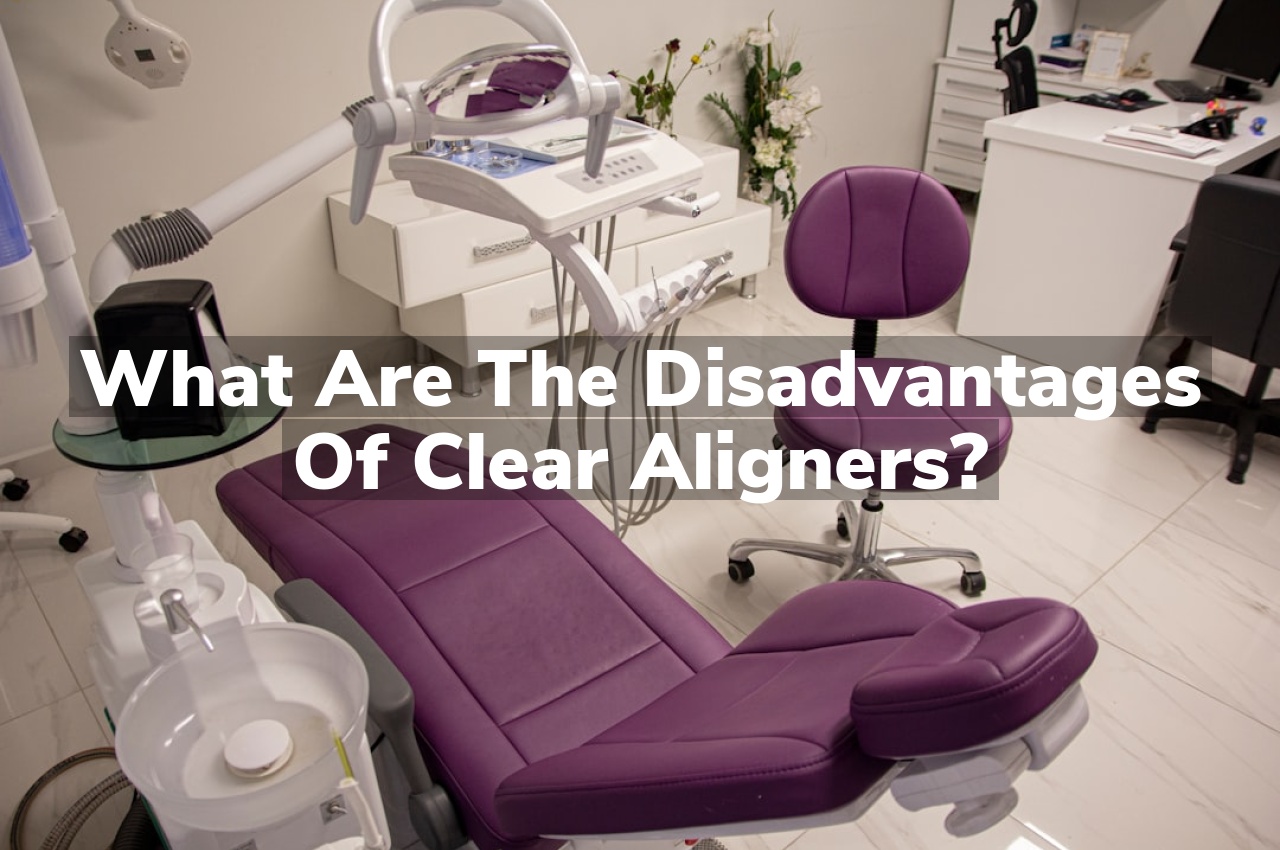What are the disadvantages of clear aligners? While clear aligners are a popular choice for teeth straightening, they come with certain drawbacks, including the need for consistent wear and potential discomfort during adjustment periods. Additionally, their effectiveness can vary depending on the complexity of the dental issues being addressed.
One of the primary disadvantages of clear aligners is their high initial cost. Unlike traditional braces, which often have a range of pricing options depending on the materials used, clear aligners typically come with a higher upfront investment. This can be a significant barrier for individuals considering this method of teeth straightening, especially if they do not have dental insurance that covers a portion of the cost. The expense is attributed to the custom manufacturing process of the aligners, which involves precise 3D printing technology and personalized treatment planning.
Despite the effectiveness of clear aligners in correcting various dental alignment issues, the cost factor remains a considerable disadvantage for many. It’s important for potential users to carefully evaluate their financial situation before committing to this treatment. For more detailed information on suitability and considerations, you might want to read Who Should Not Get Clear Aligners?
Requires Consistent Wear
One of the primary disadvantages of clear aligners is the commitment required to wear them consistently. For effective results, clear aligners must be worn for the recommended 20 to 22 hours per day, which demands a high level of discipline and routine from the user. This can be particularly challenging for individuals who might find it inconvenient to keep the aligners in place almost all day, especially during social or professional engagements where they might feel compelled to remove them.
Moreover, the success of clear aligners heavily relies on the user’s adherence to the prescribed wear time. Failure to wear the aligners as directed can lead to extended treatment times or less than satisfactory results in aligning the teeth. This aspect of clear aligners can be a significant disadvantage for those who are not prepared for the ongoing responsibility of maintaining such a strict regimen. Book Your Monrovia Clear Aligners Consultation to understand more about what this treatment entails.
Limited Treatment Scope
One of the primary disadvantages of clear aligners is their limited treatment scope. Unlike traditional braces, clear aligners may not be suitable for more complex dental issues such as severe malocclusions or rotational needs of teeth. This limitation means that not all patients can rely on clear aligners as a viable option for orthodontic treatment, potentially requiring them to seek alternative methods to achieve their desired results.
Potential for Discomfort
While clear aligners offer a less visible alternative for teeth straightening, one of the disadvantages of clear aligners is the potential for discomfort. As with most orthodontic treatments, the process involves moving teeth gradually, which can lead to pressure and temporary discomfort in the gums and jaw. Each new set of aligners might initially cause soreness as the teeth adjust to the new positioning. For more information on dental health, consider visiting Monrovia Dentist at Healthy Life Dental.
Responsibility for Maintenance
One of the notable disadvantages of clear aligners is the responsibility for maintenance that falls entirely on the user. Unlike traditional braces that are adjusted by professionals, clear aligners require the user to manage their own treatment schedule, including timely switching to new aligners and ensuring the aligners are clean and undamaged. This level of personal responsibility may prove challenging for some, potentially affecting the overall effectiveness of the treatment if not managed properly.
Risk of Misplacement or Loss
One of the notable disadvantages of clear aligners is the risk of misplacement or loss. Unlike traditional braces that are permanently affixed to your teeth, clear aligners are removable. This feature, while convenient for eating and cleaning, also increases the likelihood of losing the aligners or forgetting where they’ve been placed. Losing aligners not only disrupts the continuity of your treatment but can also incur additional costs and extend the treatment duration if replacements are needed. Therefore, it’s crucial for users to develop routine and safe storage practices to minimize these risks.
Visible Attachments Required
One of the notable disadvantages of clear aligners is the need for visible attachments or “buttons” that are sometimes necessary for the treatment. These attachments are small, tooth-colored dots made of dental bonding material that are affixed to your teeth to help the aligners grip and move the teeth more effectively. Although clear aligners are praised for their invisibility, these attachments can make them more noticeable, which might detract from the aesthetic appeal that initially attracts many users to this orthodontic solution. This visibility issue can be a significant drawback for those who seek a truly inconspicuous dental treatment option.
Frequent Dental Visits
One of the notable disadvantages of clear aligners is the requirement for frequent dental visits. While clear aligners offer a less visible method for straightening teeth compared to traditional braces, they necessitate regular check-ups to monitor progress and make adjustments. These frequent visits can be inconvenient, especially for individuals with busy schedules or those living far from their dental practitioner. Each session aims to ensure the aligners are functioning as intended, but it can add up in terms of time and travel costs, potentially making this treatment option less appealing for some people.
Ineffectiveness for Complex Cases
One of the significant disadvantages of clear aligners is their ineffectiveness in handling complex dental cases. While clear aligners are highly effective for mild to moderate alignment issues, they may not be suitable for more severe cases, such as large overbites, complex rotations, or significant tooth gaps. Traditional braces often provide the necessary force and precision for these intricate adjustments. Therefore, patients with complex dental needs might find clear aligners less effective, leading to extended treatment times or the need to switch to conventional braces to achieve the desired results.
Conclusion
While considering the disadvantages of clear aligners, it’s essential to gather all relevant information. For further inquiries, feel free to call (626) 256-3368 or read reviews on Google Maps.





